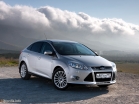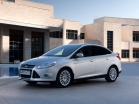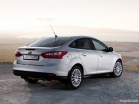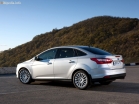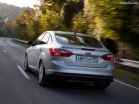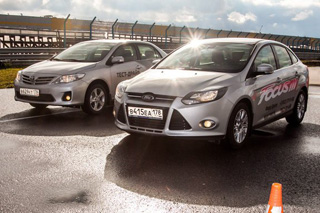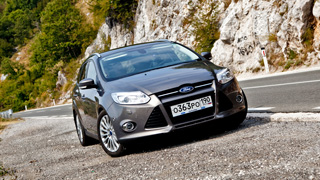Test drive Ford Focus sedan since 2010 sedan
Test drive Ford Focus III: Generation Change
In the Russian Ford Focus of the second generation, the Ford Focus of the second generation has become a real bestseller not only of a single Ford brand, but also of the most mass segment of class C cars. Over the course of several years, the second focus occupied a leading position in its class, without giving the championship laurels for a month.
In the summer of 2011, sales of the new third generation Ford Focus started in Russia. In early August, a 1.6-liter hatchback from the very first batch of Russian tricks had already visited our test. Two months later, at the invitation of the Russian representative office of Ford, we went to Gelendzhik to get acquainted with the sedans aggregated by 2.0-liter engines and the PowerShift transmission.
Outside, the focus clearly freshened. The appearance has become more modern and aggressive. The bumper pouted with relief outlines, the air intake increased, the headlights received additional cut. Despite the appearance of Asian strokes in the form of Ford, the new Focus looks not only stylish, but also recognizable.
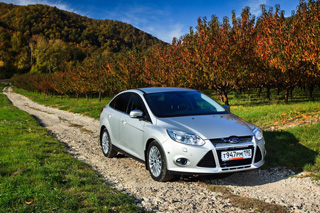
The new Ford Focus freshened. A relief bumper, an inflated hood and faceted optics appeared in front. This mayakap has benefited the focus - the design became modern and modern. This appearance is clearly focused on a younger audience.
The design of the sedan seemed more balanced and holistic than that of the hatchback. There is no deep neckline of the rear lamps, to the indecent wings that are on the hind wings, and the roof line harmoniously passes to the posterior junkies, ending in an elegant overhang. Large lights are not knocked out of the general ensemble, a relief bumper to the place and imitating a small spoiler of the trunk cover came by the way.

The sedan seemed more balanced to us. Large rear lights came to the place, and a highly littered rear stand gives the silhouette of swiftness.
The driver's place was radically transformed. The seats are excellent, with a verified profile and developed lateral support. Right before my eyes, a convenient steering wheel and a stylish instrument shield with a high -contrast screen, which display various settings, useful information and data on the on -board computer.
From the point of view of ergonomics, Ford Focus is almost impeccable. The control ranges are sufficient, the landing is convenient, all the interior details are worked out to the smallest detail. But the rounded torpedo and swollen door panels cut free space, because of which large drivers of the focus salon may seem tight, primarily when planting, when they will touch the steering column with their knees.
Compared to the previous model, the interior decoration quality has seriously improved. The assembly at a height, the salon breathes with soft plastic, the inserts for aluminum look soundly, and two colored screens delight the eye with high -quality graphics.
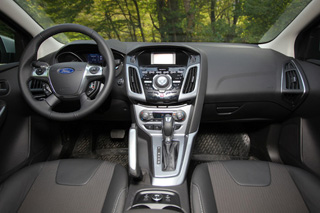
The owners of the previous generation of the model did not complain about the quality of the interior decoration. But the current Ford Focus has become even better. In the finish, a soft and pleasant to the touch plastic is used, the assembly is made perfectly. Among the options there was a noble contour backlight of the cabin, which is offered by one package with bi-xenon headlights.
Despite the increased wheelbase, it was no more spacious on the back sofa. The average driver is still sitting behind himself with a small margin of free space. If the hatchback trunk decreased by only 5 liters, then the practicality of the sedan suffered a lot more: the useful volume decreased from impressive 467 to mediocre 372 liters, moving a new focus of leaders to obvious outsiders.
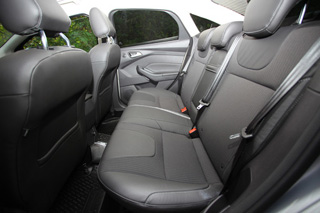
There was no place in the back row. A medium-sized driver still sits behind himself with a small margin.
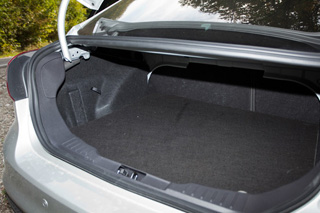
Due to the fact that the trunk volume of the sedan decreased by a good 95 liters, according to this indicator Focus is now in outsiders.
The first we had a chance to test Ford Focus with a 2.0-liter gasoline engine and a PowerShift robotic box. Structurally, the GDI motor has not changed much, having received the direct injection of fuel and the variable phases of gas distribution. Compared to its predecessor, its power increased from 145 to 150 hp, and the maximum torque from 185 to 202 nm. Honestly, you expect more from this engine. If the start from the place of the 2.0-liter focus was given well and fit into the declared 9.3 seconds to 100 km/h, then acceleration from 50 to 100 km/h takes 13.7 seconds. This is only one tenth faster than that of a 125-horsepower engine of 1.6 liters. You press on the gas, the motor makes a heal, but the expected acceleration only comes when the tachometer arrow is selected to the red zone. With a traction on medium-sized 2.0-liter unit, things are not in the best way. At the same time, the PowerShift box worked quite quickly, only occasionally getting down due to machinations of the motor.
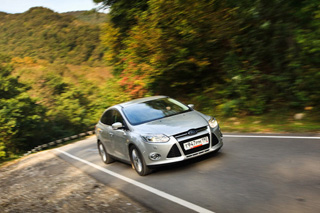
The 2.0 gasoline engine, which received a direct injection of fuel, starts well, but the craving at medium -speeds is not impressive. From a 150-horsepower, you expect more agility. At the same time, the PowerShift robotic transmission works on the top five.
A strange solution seems to be the location of the manual transmission of the PowerShift robot on the side of the gearbox. We had to face such a layout for the first time. I must say that using it is not so uncomfortable as unusual, although without the intervention of the driver, the robot copes with its work perfectly.
For comparison, we also swept on a diesel focus equipped with a 2.0 TDCI engine in tandem with PowerShift. Here everything falls into place - the engine, box and chassis work as a whole, allowing you to get much more pleasure from driving and reveal the entire potential of the car.

Diesel Ford Focus with a 2.0-liter engine with a capacity of 140 hp I was pleased with excellent traction at low and medium speeds. 320 Nm of the maximum torque is always enough and everywhere. The mutual understanding between the PowerShift box and the motor is also at the level.
Despite the advantage of a gasoline engine of 10 hp. And nominally faster acceleration to 100 km/h, and in the city and on mountain serpentines, Diesel showed itself from a much more profitable side. 320 Nm of the maximum torque provides the necessary traction stock from 2,000 rpm. As a result, Ford Focus not only starts well, but also firing with medium speeds with dignity, fading only when the tachometer shooter is selected to the limiter.
At the same time, the motor does not bark at either high speeds, and the average consumption in the mixed cycle is about 6.8 liters per 100 km of path. The mutual understanding of the diesel engine with the box is excellent, the transmission in time switches to the desired step and quickly jumps to the lowered one, where it is necessary. The box is stuck only with starting or a sharp change in the road situation, when, for example, PowerShift has already planned a logical switch up, and the driver took and stamped the gas pedal.
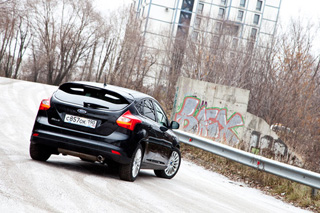
The only drawback of diesel Ford Focus is its price, which starts from 820 thousand rubles.
The diesel focus is good, but the price of the price by Ford Focus 2.0 TDCI is just starting from a mark of 826,000 rubles, and for a well -equipped version, dealers are already asking for 950 thousand.
Can the new Ford Focus repeat the success of his predecessor? Due to the bright design, the novelty will clearly attract a younger audience, which considered the second generation of focus too boring and monotonous. The senior, more practical and conservative generation, on the contrary, is displeased on a too licked appearance, a space salon and a decreased luggage volume.
Meanwhile, the price of basic configurations, although it increased, still remained within reasonable limits (from 499,000 rubles). It’s just that, along with the release of the new generation of the model, a change of generations of not only focus itself, but also its audience occurred. Therefore, Ford success did not fail.
Kirill Kalapov, Ruslan Galimov
A source: Carclub.ru

